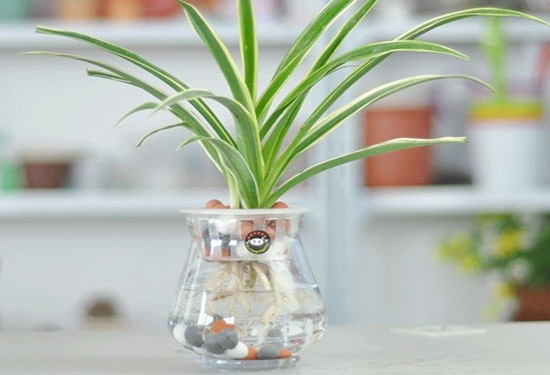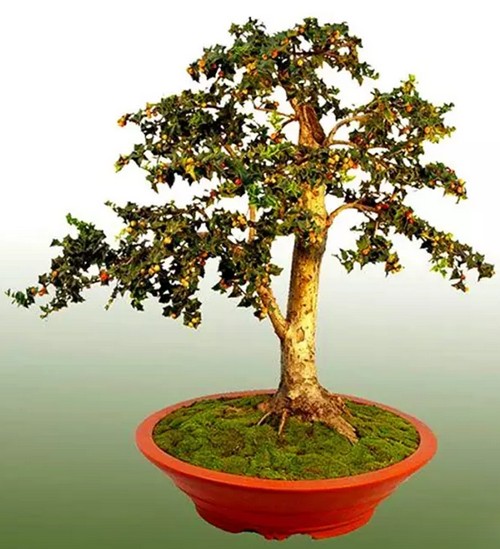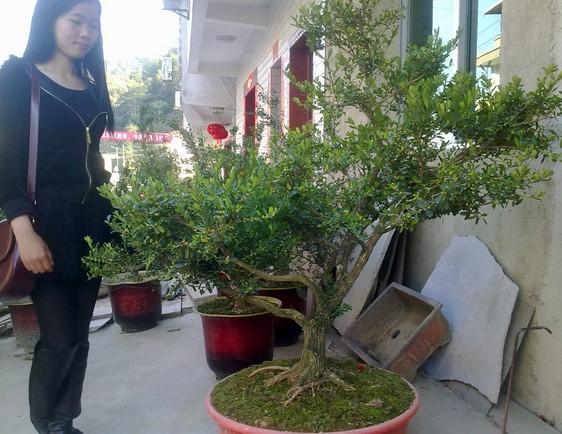Water exchange skills of hydroponic plants
There is very little moisture in the air in winter, especially in the north, and the indoor is very dry, which is unfavorable for the growth of plants, so daily spray leaves with clean water to maintain humidity, and spray water twice a day.

1, 20-25℃ (spring and autumn) about 10-15 days to change the water. Low temperature can appropriately extend the water change time, high temperature should be shortened.
2, flower fish co-culture, water change should be frequent. It is best to buy a very small power consumption of about 3 watts of micro air pump, properly inflated, you can greatly extend the water change time (generally 1-2 months for water change once).
Tap water can be used, but it is best to leave it for one to two days. Mineral water or purified water can also be used directly. The temperature difference between raw water and new water should not be too large. 6ML bagged nutrient solution mixed into 2.25 L large cola bottle of water after use. 300ML bottle of nutrient solution each cap stock solution mixed into 2.25L large cola bottle after use. The shelf life of diluted nutrient water is 6 months, and it is stored away from sunlight at ordinary times.
4. Due to the adsorption, metabolism and algae activities of the roots, the surface of the roots will be covered with foreign matter after a period of time. When changing water, it can be washed away with water carefully. Dead roots, if any, should be removed when changing water.
5, the bottle water should not be too much, about 2/3 of the root length immersed in water is appropriate.
6, winter is lower than 10 degrees and summer is higher than 35 degrees should reduce the use of nutrient solution concentration (generally 1/3-1/2 of normal) or only clean water cultivation.
Rinse plant roots and containers with clean water every time you change water, trim dead branches, leaves and rotten roots. Under normal growth conditions, hydroponic plants will regularly rot part of the roots and grow new roots, so when you find rotten roots, don't panic first, use sterilized scissors (disinfected with alcohol cotton) to prune the rotten roots, and sometimes you can prune some old roots to promote the growth of new roots (note: under the guidance of professionals). But be careful not to hurt aquatic roots, otherwise it will affect the growth of plants.
Changing the water for hydroponic plants is very simple. As long as you master the operation process, you can easily replace the waste liquid and change the living environment for the plants. The water change process needs to consider the time for changing the water for the plants, usually a fixed period. The second is to clean the roots and containers of the plants. The third is to pay attention to the depth of the water. Let's explore these three questions together.
1. Water change time:
The water change time is usually 5-7 days. However, water change depends on seasonal conditions. Flowers that have just been hydroponic require 1-2 days to change water. Summer plants grow vigorously, the temperature is high, the water is easy to deteriorate, the time should be shortened. In winter, most plants are in semi-dormancy or dormancy state, the temperature is low, and the interval time of changing water can be longer. Generally speaking, the water change interval is shorter, which is beneficial to plant growth.
2. Cleaning of roots and containers:
When changing water, the root system should be cleaned. The mucus on the root system can be washed away with clean water, and some rotten roots and old roots that have lost their absorption capacity should be cut off. After using the container for a period of time, the wall will adhere to some sediments, and it is also easy to grow moss. It should also be cleaned when changing water.
Depth of water:
In hydroponic flowers, often the roots immersed in water, but this method is inappropriate, the best water should not be added too much, most of the roots are fully immersed in water, a small number of roots exposed in the air, so that the roots can absorb dissolved oxygen in water, but also from the air.
The roots of hydroponic plants, those white and tender roots above are aquatic roots, some grow directly from the base of the stem, some grow from the main root, they are responsible for the absorption function of the plant, must not hurt them.
Time: 2019-06-13 Click:
- Prev

Cultivation technique of bonsai with Chinese wolfberry
Chinese wolfbone, also known as tiger thorn, cat thorn, bird not sleeping and so on, is a common landscape tree species, which is often used in landscape design and urban greening. However, because Chinese wolfberry has high ornamental value, many people now use it for bonsai art modeling and potted culture.
- Next

Pruning technique of Populus tomentosa bonsai
Poplar bonsai, mostly made from wild piles by the water, has become art treasures because of its small evergreen leaves and slow growth. Purple sand pottery is commonly used, and the basin color is mostly purple or light yellow. The shape of the basin depends on the shape, the cliff type should use a deep thousand-cylinder basin, and the oblique or curved type should use an oval or rectangular basin.
Related
- Fuxing push coffee new agricultural production and marketing class: lack of small-scale processing plants
- Jujube rice field leisure farm deep ploughing Yilan for five years to create a space for organic food and play
- Nongyu Farm-A trial of organic papaya for brave women with advanced technology
- Four points for attention in the prevention and control of diseases and insect pests of edible fungi
- How to add nutrient solution to Edible Fungi
- Is there any good way to control edible fungus mites?
- Open Inoculation Technology of Edible Fungi
- Is there any clever way to use fertilizer for edible fungus in winter?
- What agents are used to kill the pathogens of edible fungi in the mushroom shed?
- Rapid drying of Edible Fungi

